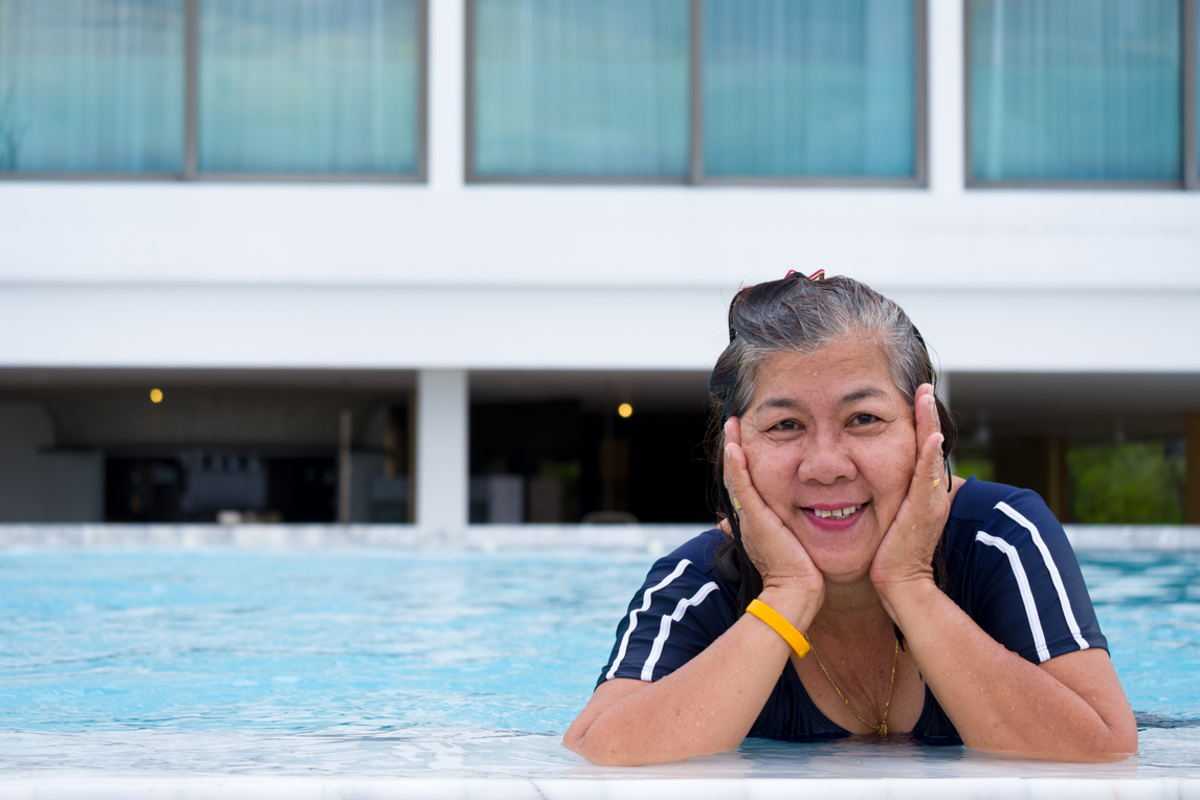Alzheimer’s Disease is a condition that occurs when the brain starts to degenerate. As the ventricles shrink in size, it becomes more and more likely for patients with this disease to experience changes in their personality, behavior, and movements.

Exercise 1: Walk at least 30 to 45 minutes per day
Making sure you keep walking is very important for patients with newly-diagnosed Alzheimer’s Disease. The brain is unable to coordinate fine movements like it once did when healthy, so it can become very difficult for a patient to be able to stay upright with balance. When this happens, patients are more prone to falling and will be easily frustrated because of this new hindrance in their life. With frustration, it is only natural for the patients to avoid any type of walking.
When someone stops walking, muscles in the pelvis, the legs, and the back start to waste away because they are no longer used regularly. As a result, balance and stability can become much worse in a short period of time because you will now not have the strength to stabilize yourself when trying to maintain your balance.
Make sure that when doing this type of exercise, however, that you have adequate measures in place beforehand to avoid an accidental fall. Using a walking aid like a walker or a cane and making sure you are walking with the supervision of another person can be a great defense against this type of risk. When using a treadmill, hold onto the bar to maintain your balance.
Exercise 2: Hop on a stationary bike for 30 minutes per day
Walking is a great option because everyone can do it without having to pay any additional money. Weather can easily get in the way of your plans for a daily stroll, whether that be from a passing thunderstorm or having to deal with ice and snow for a few months of the year. If you don’t happen to be living in a nice tropical paradise, a good option for you to consider would be investing in a stationary bike.
As a result, you will have a very effective leg work-out. This also is considered to be a good option for Alzheimer's patients who do not have consistent supervision. Using a stationary bike will allow people diagnosed with Alzheimer’s Disease to still have an independent schedule without requiring a caregiver to change their plans to accommodate the exercise schedule of the patient. Even if it is more expensive, this will provide you and the caregiver with more flexibility and would be a worthwhile investment.
Exercise 3: Start chair yoga
This may be an idea that you atomically shoot down but before you make a sweeping decision, try to listen to the logic behind why this would be a good idea before passing judgement on the idea. Patients with Alzheimer’s Disease are almost always elderly people with inherent issues with flexibility. As we age, our joints just become stiffer as years of wear and tear begin to manifest.
Taking yoga may should like a pipe dream because you may think your lack of flexibility will make this therapy useless, but multiple studies show how significant the results can be even after a few weeks of stretching exercises. Even if you consider yourself to be “stiff as a board,” you will improve your flexibility after guided instruction in yoga.
Chair yoga is different than the more traditional style of yoga you may be thinking about because you use a chair during these types of exercises. The chair not only will help maintain stability as you are doing poses you may not think you could do, but it can also be used as exercise equipment to help increase your strength in your arms.
This is a good type of work-out to consider because of the ease and comfort of being able to do these types of exercises. Chairs are readily available anywhere in your house and if you have an Internet connection at home, you can easily find an array of videos online that can help guide you in your Yoga Chair journey.
Exercise 4: Swimming and other pool-based exercises
Another great exercise that you can do would be to do get into a swimming pool. Not only can you swim laps for a good cardio work-out, but you can also use the properties of water to help do resistance training without becoming too damaging on your joints. Numerous gyms around the globe now offer resistance work-outs designed for senior citizens. This can range from anything like carrying small weights to using the water as resistance so you can strengthen your legs.
Pool exercise may be a bit harder to coordinate compared to some of the other exercise tips that I have offered above but if you do have access to a local public pool or one down at the local gym, try to implement this into your work-out as soon as you can.


Your thoughts on this